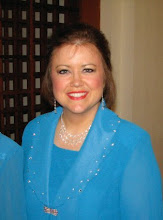It seems to have become commonplace to hear the following construction:
“If I would have known, then I would have…”
What is the problem with this, you say? There are too many conditions, that’s what. It should be, “If I HAD known, then I would have…”
There is a cause and effect relationship between the two events in an “if/then” statement. The knowing leads to the second thing, which didn’t happen because the speaker didn’t know. The condition of knowing was not met, so the second thing, say, baking a cake, could not be fulfilled. If such and such had happened, then this other thing would have also happened.
Bert and Ernie used to sing, “If I knew you were coming, I’d have baked a cake.” That could also be stated, “If I had known you were coming, then I would have baked a cake.”
Bottom line, there should only be one “would” per statement. You may say, “I wish I had gone,” “If I had been there,” “If I had seen it,” etc. before your “would” clause, describing the unmet condition that would have caused you to do something else.
If I had known this rule, then I would have said it correctly!
If I had remembered the sandwiches, then you would not have gone hungry.
The order of your if/then clauses can also be reversed, leading to sentences like the following:
It would have been nice if you had told me not to wear red to the game.
I would have worn my raincoat if I had watched the weather report.
In these cases, the effect is described before giving the cause.
Unfortunately for grammar police like me, a wide range of fairly well-educated people like MBAs, school administrators, and members of Congress make such general use of the “would have/would have” syntax, that my trying to change the habit is akin to holding back the ocean with a spoon (which is probably true for most of my pet peeves having to do with the spoken word). However, I have to try!
Note: This rule still applies even if you think you're only using one "would have" in your sentence; it could still be wrong. If you're lamenting things that were or were not done in the past, you still need "had" rather than "would have."
I wish I had gone to that movie with you.
I wish you had told me you were going.
I wish we hadn't bought the big box of popcorn.
In these cases, the "would" clause is implied as the second part of those thoughts ("because it would have been better if I had"). The cause needs “had,” while the effect gets “would have.”
I wish we had bought shares of Apple a few years ago (because now we would have been rich).
I suppose I'm still going to see or hear my friends write or say it incorrectly now and then, but it's starting to give me a facial tic!
